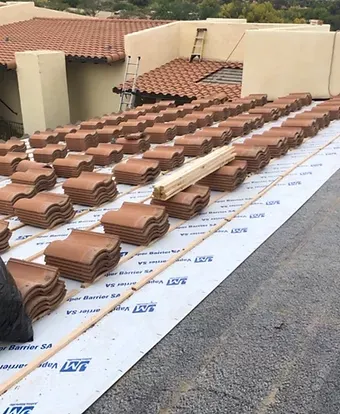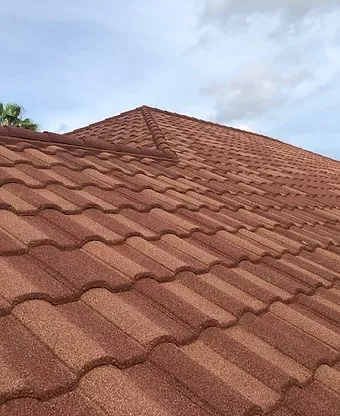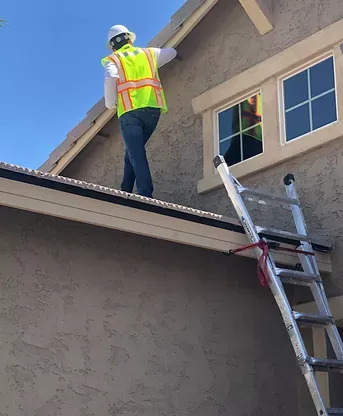A Business Owner's Guide to Built-Up Roofing (BUR) in Southwest Florida
A Business Owner's Guide to Built-Up Roofing (BUR) in Southwest Florida
Understanding Built-Up Roofing (BUR)
Built-up roofing, commonly referred to as BUR, is a time-tested roofing system that has been widely used for commercial flat roofs. It consists of multiple layers of bitumen, typically asphalt or coal tar, and reinforcing felts alternately stacked to create a durable and waterproof membrane. The top layer is finished with gravel, mineral granules, or a reflective coating to protect the roof from UV rays and add extra durability. This layered construction gives BUR its nickname, "tar and gravel" roofing, and makes it a reliable choice for businesses in Southwest Florida.
In Southwest Florida, where the climate can be harsh with intense heat, high humidity, and frequent storms, BUR systems have proven their worth over decades of use. Their ability to withstand the elements while providing long-term protection makes them a popular option for commercial buildings. Moving forward, we’ll explore how these roofs are constructed and why they remain a go-to solution for business owners in this region.
How BUR Systems Are Constructed
The process of installing a built-up roofing system begins with preparing the roof surface to ensure it’s clean, dry, and free of imperfections. A vapor retarder may be applied first to prevent moisture from seeping into the building. After preparation, the base sheet is laid down, which serves as the foundation for the subsequent layers. These layers consist of alternating sheets of reinforcing felts and hot or cold-applied bitumen, creating a robust barrier against water infiltration.
Once the desired number of layers is achieved, the final surfacing material is added. This could be gravel, which provides excellent UV protection and helps with drainage, or a reflective coating designed to reduce heat absorption. Hot-applied BUR involves heating asphalt or coal tar before application, while cold-applied systems use adhesives that don’t require heating. Each method has its advantages depending on environmental conditions and project requirements.
Choosing between hot- and cold-applied BUR depends on factors like weather during installation and odor concerns. Hot-applied systems are often preferred for their strong bonding capabilities, but cold-applied options are ideal when minimizing disruption to business operations is critical. Understanding these steps ensures you appreciate the craftsmanship involved in creating a durable BUR system tailored to your needs.
Benefits of BUR for Southwest Florida Businesses
Built-up roofing offers numerous benefits that make it particularly well-suited for businesses in Southwest Florida. Its multi-layered design provides exceptional resistance to water, making it an excellent choice for areas prone to heavy rainfall and hurricanes. Additionally, BUR systems are highly durable and resistant to UV rays, which helps combat the intense sun exposure common in this region. This resilience translates to reduced risk of rot, shrinkage, and other issues caused by heat and humidity.
Another key advantage of BUR is its energy efficiency. Reflective coating s and gravel surfacing can significantly lower cooling costs by reducing heat absorption. For business owners concerned about both performance and cost savings, BUR proves to be a smart investment. As we delve deeper into comparisons with other roofing systems, you’ll see how BUR stacks up against alternatives in terms of value and functionality.
Comparing BUR to Other Commercial Roofing Systems
When considering roofing options, it’s important to compare BUR with other popular systems like TPO, PVC, EPDM, metal, and modified bitumen. TPO and PVC membranes are known for their flexibility and energy efficiency, but they might not offer the same level of durability as BUR in extreme weather conditions. EPDM, a synthetic rubber membrane, is budget-friendly but less resistant to punctures compared to BUR’s reinforced layers.
Metal roofing is another alternative praised for its longevity and sleek appearance, though it tends to come at a higher upfront cost. Modified bitumen shares some similarities with BUR but uses fewer layers, making it lighter yet potentially less robust. While each system has its merits, BUR stands out for its proven track record in challenging climates like Southwest Florida’s.
Ultimately, choosing the right roofing system boils down to balancing cost, lifespan, maintenance needs, and suitability for local weather patterns. In regions where storms and heat are constant concerns, BUR’s reliability and protective qualities give it a competitive edge. Now let’s examine how long you can expect a BUR roof to last and what warranties are available to safeguard your investment.
BUR Roofing Lifespan, Warranties, and Durability
A well-installed built-up roofing system can last anywhere from 15 to 20 years, depending on factors like maintenance, materials, and environmental conditions. Many manufacturers offer warranties ranging from 10 to 20 years, providing peace of mind for business owners investing in this durable solution. Proper installation plays a crucial role in maximizing the roof’s lifespan, so working with experienced contractors is essential.
In Southwest Florida, where hurricanes and tropical storms are frequent, the durability of a BUR roof depends heavily on regular upkeep and adherence to best practices during installation. High-quality materials combined with professional workmanship ensure the roof remains resilient even under extreme weather conditions. With proper care, BUR can continue to deliver reliable performance year after year.
Installation and Replacement Considerations
Whether you’re installing a new BUR roof or replacing an existing one , careful planning is vital to ensure success. Start by selecting a reputable contractor familiar with BUR systems and local regulations. Material choices also matter; opting for premium-grade bitumen and felts can enhance the roof’s longevity and performance. Scheduling the installation around your business operations minimizes disruptions and ensures timely completion.
Southwest Florida’s strict building codes must also be considered during installation or replacement. Contractors should understand wind uplift requirements and hurricane-resistant designs to comply with local standards. By prioritizing these factors, business owners can avoid costly mistakes and ensure their new roof meets all necessary specifications.
Maintenance Needs and Common Repairs
To keep a built-up roof functioning optimally, routine maintenance is essential. Regular inspections help identify potential issues early, such as leaks, membrane separation, or damage caused by debris accumulation. Removing debris and ensuring proper drainage prevents water pooling, which can compromise the roof’s integrity over time.
Common repairs for BUR systems include fixing leaks , patching damaged areas, and reapplying surfacing materials if they’ve worn away. These tasks require skilled technicians who understand the intricacies of BUR construction. Addressing problems promptly is crucial for maintaining business continuity and avoiding more extensive—and expensive—repairs down the line.
Preventive measures like applying sealants or reflective coating s can extend the life of a BUR roof and improve its performance. Business owners should partner with a trusted contractor to establish a maintenance schedule tailored to their specific needs. Doing so ensures the roof remains in top condition despite the challenges posed by Southwest Florida’s climate.
Cost Factors and Budgeting for BUR Roofing
The cost of a built-up roofing system varies based on factors such as labor, materials, building size, and accessibility. On average, business owners can expect to pay between $3.50 and $6.00 per square foot for a new installation. Larger roofs or those requiring additional structural support may incur higher expenses. It’s also worth noting that ongoing maintenance costs are relatively low compared to other roofing systems.
For businesses planning a new BUR roof or repairs in 2024-2025, budgeting carefully is key. Obtaining multiple quotes from qualified contractors allows you to compare prices and services. Additionally, exploring financing options or incentives can help offset initial costs. With proper planning, investing in a BUR roof becomes a manageable and worthwhile decision for long-term protection.
Energy Efficiency and Cool Roofing Options
Built-up roofing can contribute to significant energy savings, especially when paired with cool roof technologies. Reflective coating s and light-colored gravel surfacing reduce heat absorption, lowering indoor temperatures and decreasing air conditioning demands. This is particularly beneficial in Southwest Florida, where cooling costs account for a large portion of utility bills.
By adopting cool roof strategies, businesses not only save money but also contribute to environmental sustainability. Many local programs encourage the use of energy-efficient roofing solutions, offering rebates or incentives to offset installation costs. When considering a BUR system, incorporating these features enhances both performance and eco-friendliness.
Bearing Local Regulations and Florida Code Requirements
Southwest Florida imposes stringent building codes to ensure roofs can withstand hurricanes and high winds. These regulations dictate everything from material specifications to installation techniques, emphasizing the need for compliance. For example, roofs must meet specific wind uplift ratings to qualify as hurricane-resistant.
Hiring contractors familiar with Florida-specific codes is non-negotiable for achieving a safe and compliant installation. Experienced professionals understand the nuances of local requirements and can guide business owners through the process seamlessly. Adhering to these standards not only protects your property but also avoids potential fines or legal issues.
Choosing the Right Contractor for BUR Installation
Selecting the right contractor is perhaps the most critical step in ensuring a successful BUR installation. Look for companies with certifications from recognized industry organizations, such as the National Roofing Contractors Association (NRCA). Ask about their experience with BUR systems specifically and request references from past clients in the Southwest Florida area.
Equally important is verifying that the contractor carries adequate insurance coverage and offers comprehensive warranties on their work. These safeguards protect your investment and provide recourse in case of unforeseen issues. Taking the time to vet contractors thoroughly pays off in the form of a high-quality roof that meets your expectations.
Financing and Insurance Considerations
Financing a new BUR roof or repairs doesn’t have to strain your budget. Many lenders offer loans tailored to commercial roofing projects, allowing you to spread costs over time. Alternatively, leasing agreements or manufacturer financing programs may present attractive options. Exploring these avenues helps make the investment more accessible.
Insurance considerations are equally important. Work with an insurance professional knowledgeable about commercial roofing to maximize coverage benefits. Proper documentation of your roof’s condition and any upgrades can aid in claims processing should damage occur. Protecting your roofing investment ensures your business remains operational and secure for years to come.
Frequently Asked Questions (FAQ)
How long does a BUR roof typically last in Southwest Florida?
A properly installed and maintained BUR roof can last up to 20 years in Southwest Florida. Factors such as regular maintenance, quality materials, and exposure to severe weather influence its lifespan. Investing in routine care extends the roof’s usability and minimizes repair needs.
Is BUR roofing suitable for hurricane-prone areas?
Yes, BUR roofing is highly suitable for hurricane-prone areas when installed correctly. Its layered design and strong bonding capabilities resist wind and water intrusion effectively. Regular maintenance further enhances its resilience, ensuring it performs reliably during storms.
What is the main difference between hot-applied and cold-applied BUR?
The primary difference lies in the application method: hot-applied BUR uses heated asphalt or coal tar, while cold-applied systems rely on adhesives. Hot-applied methods are ideal for robust bonding, whereas cold-applied versions minimize odors and allow for quicker scheduling, making them suitable for sensitive environments.
What maintenance is required for built-up roofing?
Built-up roofing requires regular inspections , debris removal, and surface treatments to maintain its integrity. Preventive care, such as reapplying coatings or addressing minor issues promptly, prolongs the roof’s lifespan and prevents costly repairs.
Can BUR roofing help reduce energy costs?
Absolutely. BUR roofing reduces energy costs through reflective coating s and gravel surfacing, which lower heat absorption. This leads to decreased cooling demands, helping businesses save on utility expenses while contributing to sustainability efforts.
Conclusion
Built-up roofing offers unmatched durability, weather resistance, and cost-effectiveness for businesses in Southwest Florida. Its ability to withstand the region’s unique challenges—intense heat, humidity, and storms—makes it a standout choice among commercial roofing systems. By understanding the benefits, maintenance needs, and installation considerations, business owners can make informed decisions that protect their properties for years to come.
If you’re considering a new BUR roof or need assistance with repairs, consulting with trusted roofing experts is the next step. They can provide inspections, quotes, and guidance tailored to your specific needs. Protecting your property with a high-quality BUR system ensures your business remains resilient and thriving regardless of what Mother Nature throws your way.




